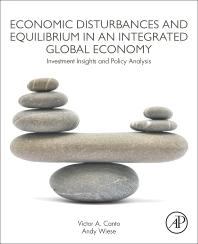|
Report Detail Summary
How Credit Markets Adjust to Economic Shocks
September 01, 2015
Combining the two types of shocks, the real GDP growth rate (i.e. demand shocks) and the growth in the quantity of credit (i.e. supply shocks), allows us to model, understand, and hopefully anticipate the changes in the credit market equilibrium conditions. Within this context, we can then anticipate that a Fed tightening would result in a contraction of the credit relative to GDP, and that will result in higher interest rates, a lower inflation rate, and quite possibly an economic slowdown. You must have an active account to view these reports. You may register for a trial here  Download Complete Report in PDF Format Download Complete Report in PDF Format
 Download Complete Report in Word Format Download Complete Report in Word Format
Copyright © 2018 La Jolla Economics All Rights Reserved Legal Disclaimer - Privacy Policy - Contact Information - Login |
Cocktail Economics: Discovering Investment Truths from Everyday Conversations Understanding Asset Allocation: An Intuitive Approach to Maximizing Your Portfolio |


